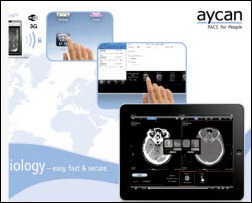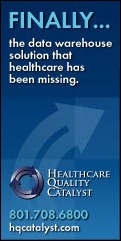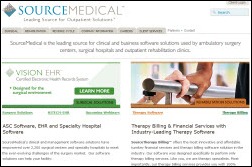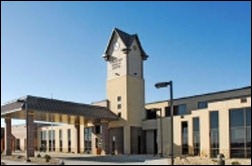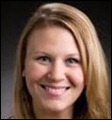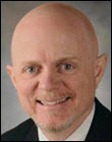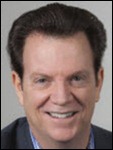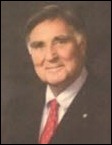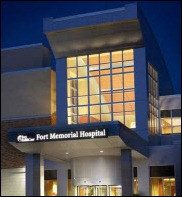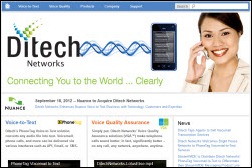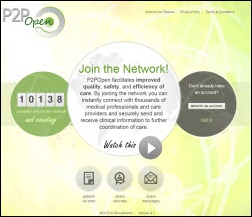Top News
![9-18-2012 10-03-17 PM 9-18-2012 10-03-17 PM]()
Massachusetts Eye and Ear Infirmary and its physician group will pay HHS $1.5 million to settle potential HIPAA violations following the theft of an unencrypted laptop containing electronic PHI of patients and research subjects.
Reader Comments
![9-18-2012 3-47-27 PM 9-18-2012 3-47-27 PM]()
![inga_small inga_small]() From Honky Cat: “Re: Waiting in line at Apple. Don’t wait in line for your iPhone upgrade. Go to this link and pre-order your phone. They will ship it to you in two to three weeks. Surely you can wait that long for it.” I considered setting my alarm to be one of the first people to go online last Friday and place an order. Instead, I slept in and waited until 6:00 am to get online. By that time Apple had stopped taking orders to reserve the iPhone 5s for pick up at the local Apple store, so I’ll wait for mine to be delivered in a couple of weeks. Apple, by the way, sold two million iPhone 5s in the first 24 hours of pre-orders, more than double the previous record set in 2011.
From Honky Cat: “Re: Waiting in line at Apple. Don’t wait in line for your iPhone upgrade. Go to this link and pre-order your phone. They will ship it to you in two to three weeks. Surely you can wait that long for it.” I considered setting my alarm to be one of the first people to go online last Friday and place an order. Instead, I slept in and waited until 6:00 am to get online. By that time Apple had stopped taking orders to reserve the iPhone 5s for pick up at the local Apple store, so I’ll wait for mine to be delivered in a couple of weeks. Apple, by the way, sold two million iPhone 5s in the first 24 hours of pre-orders, more than double the previous record set in 2011.
![9-18-2012 6-11-25 PM 9-18-2012 6-11-25 PM]()
From The PACS Designer: “Re: mobile image viewing. TPD congratulates Aycan Medical Systems for being one of the first to gain FDA approval for its Aycan Mobile for the iPad. Now that the FDA is involved with mobile solutions, we’ll see more teleradiology mobile solution approvals for other vendors.“
From Steve: “Re: QuadraMed. To be sold in the next 7-10 days.” Unverified.
From Pointer: “Re: EHRs. A vendor-agnostic viewpoint on how they don’t change the cost curve.” It may be vendor-agnostic, but this particular article is a clearly labeled opinion piece written by authors who have been historically negative toward EMRs, EMR vendors, and government. They are entitled to their opinions, but recognize them as such despite the bait-and-switch newspaper headline trumpeting “A Major Glitch.” Their editorial conclusion is accurate, though – most studies have failed to prove that EMRs save money (I haven’t seen any studies that convinced me that paper records save money or improve outcomes either, of course.) That’s not to say they don’t, only that it’s tough to prove since nothing in healthcare stays unchanged long enough to get a baseline. It’s also true that expecting technology alone to create savings with changed incentives is unreasonable. I agree with the authors that blowing taxpayer billions to get providers to buy software they weren’t willing to spend their own money on was illogical, but no amount of Monday morning quarterbacking will bring that cash back or cause providers to toss their EMRs out the nearest window. It’s time to move on, realize that healthcare IT is here to stay, and constructively make it better instead of hand-wringing. Like everything else, the industry has 10% cheerleaders, 10% naysayers, and 80% rational people who don’t need the self-proclaimed experts on either end of the spectrum to tell them what to think or do. If you’re a provider, choose EMR or paper as you desire, do something innovative with it that improves outcomes and reduces costs, and then write your own article. That’s the one I’d rather read.
From Looking Deeper: “Re: patient portals and self-scheduling. I install patient portals for a living, including scheduling. There really aren’t technical challenges any more. Providing convenient, immediate online scheduling is a solved problem even in healthcare, especially in primary care. The problem is in people’s heads. Whenever online scheduling comes up, physicians and clinic staff will tell you that their patients can’t possibly handle it – they’ll schedule the wrong kind of visit (office visit vs. physical) or create some other vague problem. I dutifully inform them that online scheduling is working fine in clinics and practices across the nation. ‘Other clinics find that their patients can handle this,’ I always say. They usually say, ‘Not our patients.’ Interestingly, clinics serving less-affluent areas and the indigent tend to be more in favor of such patient-centric services. ‘Our patients are an especially incompetent group’ is a pretty negative view to hold of the people you’re trying to care for. If we could just get past this attitude, pretty much all primary care visits could be scheduled online. In the rare case where something needs to change, the clinic can call or e-mail the patient and reschedule, but that’s less than 5 percent of appointments scheduled online. Specialty and procedure visits are a different beast and need some careful analysis before they are opened up to online scheduling, but online scheduling for primary care is a solved problem.”
HIStalk Announcements and Requests
![inga_small inga_small]() I have newfound respect for anyone working with insurance companies to secure payments. I had mentioned a few months ago that I had a minor medical procedure that resulted in some complications, lots of doctor office visits, and about 20 different medical claims. I was lucky enough to have both primary and secondary coverage in place since the claims were in the thousands. I also thought I was lucky because both policies were from the same very big insurance company. Unfortunately, the insurance company has spent the last four months trying to decide internally which policy should be primary, and so far no claims coordination has occurred. After several weeks of hour-long phone calls, yesterday I finally turned “not nice” and demanded to speak to a supervisor. I explained that I didn’t give a (expletive) which policy was primary or secondary, it was all one insurance company, and the (expletive) claims needed to be paid. I actually believe the claims will finally be processed correctly. The moral of this story is that if you work in a hospital or practice, take a moment to say thanks to your billing and collection staff. And bring them chocolate on a regular basis.
I have newfound respect for anyone working with insurance companies to secure payments. I had mentioned a few months ago that I had a minor medical procedure that resulted in some complications, lots of doctor office visits, and about 20 different medical claims. I was lucky enough to have both primary and secondary coverage in place since the claims were in the thousands. I also thought I was lucky because both policies were from the same very big insurance company. Unfortunately, the insurance company has spent the last four months trying to decide internally which policy should be primary, and so far no claims coordination has occurred. After several weeks of hour-long phone calls, yesterday I finally turned “not nice” and demanded to speak to a supervisor. I explained that I didn’t give a (expletive) which policy was primary or secondary, it was all one insurance company, and the (expletive) claims needed to be paid. I actually believe the claims will finally be processed correctly. The moral of this story is that if you work in a hospital or practice, take a moment to say thanks to your billing and collection staff. And bring them chocolate on a regular basis.
I don’t know about you, but I’ve been busy turning off all my Facebook and Twitter connections to folks who keep preaching politics. Has anybody ever convinced someone to change their political beliefs by proudly posting a Facebook link to the latest nut-job partisan article? Actually, they sometimes almost convince me to vote the other way out of annoyance.
![9-18-2012 8-38-27 PM 9-18-2012 8-38-27 PM]()
Thanks to Healthcare Quality Catalyst supporting HIStalk as a Platinum Sponsor. The Salt Lake City company offers a practical clinical data warehouse solution that combine technology and clinical improvement methodologies to improve care. The information needed to answer a clinical improvement question is scattered in most hospitals (satisfaction surveys, Epic Clarity transactions, and lab and prescription information, for example) and HQC puts it together in its Adaptive Data Warehouse and subject-specific data marts (such as women and newborns) to support continuous, evidence-based care improvements. HQC offers more than just the tools, supplying clinical improvement methodologies such as role definitions and process templates to create effective improvement teams. If you’ve been around the industry for some time, you surely know some of their folks: Todd Cozzens, Larry Grandia, Dale Sanders, Bruce Turkstra, and David Burton, MD were some of those I immediately recognized. I interviewed co-founder and CIO Steve Barlow a year ago and got a good background on the company. Thanks to Healthcare Quality Catalyst for supporting HIStalk.
I naturally cruised over to YouTube and found this video that introduces Healthcare Quality Catalyst better than I did.
Acquisitions, Funding, Business, and Stock
![9-18-2012 6-02-11 PM 9-18-2012 6-02-11 PM]()
PE firm ABRY Partners makes a “significant” investment in SourceMedical Solutions, a provider of software and services for ASCs and rehab centers.
In England, a company that commercializes university research invests in an Oxford spinoff whose software that can monitor pulse, respiration, and oxygen saturation using only a webcam.
Also in England, eHealth Insider reports that CSC will stop selling iSoft GP systems to NHS markets, in which it has 582 practice customers. CSC denies the report.
Vipaar, which sells surgery proctoring software based on technology developed at the University of Alabama at Birmingham medical school, raises half of its $1.2 million funding goal.
Sales
![9-18-2012 6-03-58 PM 9-18-2012 6-03-58 PM]()
Community Medical Center (NE) selects BridgeHead Software’s Healthcare Data Management Solution for backup and archiving.
CommUnity Care (TX) will deploy NextGen RCM Services throughout its 22 clinics.
![9-18-2012 7-47-39 PM 9-18-2012 7-47-39 PM]()
Pemiscot Memorial Health Systems will expand its deployment of Prognosis Health Information System by implementing its financial system and its laboratory information system powered by Orchard.
Community Hospital Grand Junction (CO) chooses the perioperative system of Surgical Information Systems.
People
![9-18-2012 10-51-46 AM 9-18-2012 10-51-46 AM]()
Zotec Partners hires Kristy Floyd (American Society of Anesthesiologists) as director of anesthesia business development.
![9-18-2012 11-13-49 AM 9-18-2012 11-13-49 AM]()
The Medical College of Wisconsin appoints David C. Hotchkiss (University of Texas Health Science Center) VP/CIO.
![9-18-2012 3-28-44 PM 9-18-2012 3-28-44 PM]()
Healthland names Patrick Spangler (Epocrates) CFO.
![9-18-2012 8-19-54 PM 9-18-2012 8-19-54 PM]()
Douglas Billian, founder of Billian Publishing, died September 15 at 84.
Announcements and Implementations
![9-18-2012 6-05-42 PM 9-18-2012 6-05-42 PM]()
HIMSS Analytics recognizes Fort HealthCare (WI) with its Stage 7 Award for EMR adoption.
Providence Medford Medical Center and Asante Rogue Regional Medical Center (OR) will complete their hospital and clinic implementations of Epic in April.
![9-18-2012 6-06-34 PM 9-18-2012 6-06-34 PM]()
Nuance will purchase Ditech Networks, a provider of voice technologies and voice-to-text services, for $22.5 million.
AMA releases the 2013 CPT code set, which goes into effect for claims filed as of January 1, 2013.
Certify Data Systems announces the general availability of its HealthLogix HIE platform, which it says is the first to deliver an aggregated patient view from all community health encounters regardless of EHR.
![9-18-2012 6-08-43 PM 9-18-2012 6-08-43 PM]()
Cincinnati Children’s Hospital Medical Center (OH) implements Passport Health’s PatientSimple and Smart Statement online billing solutions.
![9-18-2012 6-01-14 PM 9-18-2012 6-01-14 PM]()
eClinicalWorks launches its $10 million open, secure collaboration platform that works with any EHR or even paper-based practices. The NHIN Direct-compatible network allows members to transmit electronic referrals and patient records with attachments.
Government and Politics
ONC posts the second wave of draft test procedures for the 2014 Edition EHR certification criteria.
I don’t think Farzad ever followed through on his promise to name the EMR vendors who took his #VDTnow pledge to allow patients to view, download, and transmit their medical information. Claudia Williams of ONC tweeted her list, which I assume is complete: Allscripts, NextGen, AlereWellogic, Intellicure, eClinicalWorks, Greenway, SOAPware, athenahealth, Azzly, and Cerner. Conspicuously but not surprisingly missing is Epic, which doesn’t even have a Twitter account as far as I know. Maybe they already offer the capability as some have suggested, but if so, all they had to do was tweet out their already-met pledge. Judy’s on ONC’s Health IT Policy Committee, after all.
Innovation and Research
The National Library of Medicine awards The Ohio State University College of Medicine’s Department of Biomedical Informatics $1.3 million to develop a system that uses EHRs to identify potential patients for clinical trials.
Other
![inga_small inga_small]() Wider use of EHRs over the last decade may be contributing to a growing up-coding trend that has added $11 billion to healthcare costs. Physicians argue the higher codes are justified because care of seniors has become more complex and technology allows them to code more accurately. Critics say the findings suggest billing abuse and fraud. I I were still selling EMRs, I’d be handing this study to doctors and touting it as proof that technology is helping physicians bill and be paid for the actual care provided. Meanwhile, naysayers like Mr. H will probably dig deeper and suggest objections to such hasty conclusions.
Wider use of EHRs over the last decade may be contributing to a growing up-coding trend that has added $11 billion to healthcare costs. Physicians argue the higher codes are justified because care of seniors has become more complex and technology allows them to code more accurately. Critics say the findings suggest billing abuse and fraud. I I were still selling EMRs, I’d be handing this study to doctors and touting it as proof that technology is helping physicians bill and be paid for the actual care provided. Meanwhile, naysayers like Mr. H will probably dig deeper and suggest objections to such hasty conclusions.
![inga_small inga_small]() Hell hath no fury: a Washington dermatologist wins a $600,000 settlement and a rare apology from state health officials who had investigated him for drug abuse and medical fraud. An anonymous tipster had reported that the doctor was falsifying drug records, using cocaine, and running in-office orgies among his staff, patients, and prostitutes. In a separate lawsuit, the doctor was award more than $100,000 from his former wife, who turned out to be the anonymous tipster who had filed the complaint late in the couple’s bitter divorce proceedings.
Hell hath no fury: a Washington dermatologist wins a $600,000 settlement and a rare apology from state health officials who had investigated him for drug abuse and medical fraud. An anonymous tipster had reported that the doctor was falsifying drug records, using cocaine, and running in-office orgies among his staff, patients, and prostitutes. In a separate lawsuit, the doctor was award more than $100,000 from his former wife, who turned out to be the anonymous tipster who had filed the complaint late in the couple’s bitter divorce proceedings.
The folks from Arizona Associated Surgeons sent over their video for the Western Users Group meeting at ACE (the Allscripts user meeting) last month.
![9-18-2012 9-03-09 PM 9-18-2012 9-03-09 PM]()
Want to rub elbows with sexy celebrities on your hospital employer’s dime? CHIME’s Fall CIO Forum will feature Olympic beach volleyball gold medalists Misty May-Treanor and Kerri Walsh Jennings, mostly known for leaping around nearly naked in prime time reminiscent of the much-beloved “Girls on Trampolines” segment of The Man Show except with smaller bikinis. Misty and Kerri (or was that Misti and Kerry?) will discuss Meaningful Use Stage 2 and … no, wait, they’ll pose with star-struck CIOs, sign autographs, and collect a big non-amateur payday courtesy of patients who pay $5 for an aspirin.
A group of 30+ physicians labeling themselves as “Doccupy” complain to Contra Costa, CA county supervisors about the $45 million implementation of Epic at its hospitals. They said 10 percent of ED patients are leaving without seeing a doctor, a number that increased after the hospital’s July 1 go-live as the average time in the ED increased from three hours to four. Patient loads were cut in half to prepare for the implementation, but the doctors claim that several of their peers still quit because of stress, saying, “We were not ready for Epic and Epic was not ready for us.” An ED physician going off shift said she still had documentation to complete for 16 patients, adding, “It’s going to implode.” Some doctors spoke up about the advantages of Epic, and all agreed that it’s important to have an integrated electronic record. Detention facility nurses had complained about Epic to the supervisors last month.
![9-18-2012 8-15-51 PM 9-18-2012 8-15-51 PM]()
The Cure JM Foundation (juvenile myositis) is in the running for a $250K research grant that will go to the charity with the highest number of Facebook votes. Information and voting links are here. Several HIT folks I’ve heard from have children with JM and I’m sure they would appreciate your vote.
Patients storm Charlton Memorial Hospital (GA) after a contracted collection company incorrectly manipulates the hospital-provided data file, sending patients collection notices for bills they don’t owe.
![9-18-2012 9-52-28 PM 9-18-2012 9-52-28 PM]()
Of the seven highest-earning non-profit CEOs in the country, four run hospitals, according to the Chronicle of Philanthropy. I think they’ve missed a few since I’ve seen several hospital tax forms with CEO salaries above these figures.
![9-18-2012 9-22-57 PM 9-18-2012 9-22-57 PM]()
Bloomberg Businessweek profiles Terry Ragon, founder of the Boston-based InterSystems, which sells the Cache’ database that runs Epic, Meditech, and quite a few other MUMPS-based healthcare systems. The article calls Ragon a “Hidden Software Billionaire,” estimating the value of the company he directly owns at $2 billion.
![9-18-2012 8-32-54 PM 9-18-2012 8-32-54 PM]()
Here’s a fun coincidence. Dave Miller, vice chancellor and CIO of the University of Arkansas for Medical Sciences, sent over the above video of him doing a nice cover of “Mustang Sally” at Epic’s UGM (his wife had the camera 90 degrees off kilter for a few seconds, but his singing was fine). The day they got back home, he impulsively bought some raffle tickets from a charity fundraiser. He won the prize, which was made in 1967, the same year Wilson Pickett released “Mustang Sally” on an album – a classic Ford Mustang.
Sponsor Updates
- SuccessEHR grows its RCM services business 92 percent over the last year.
- First Databank hosts its 2012 FDB Customer Seminar this week in San Diego.
- T-System offers Webinars this week on improving ED throughput.
- Melanie Pita JD, EVP of product management at Prognosis Health Information Systems, presented a session on EHRs and Meaningful Use at the Georgia Rural Health Association conference this week at Callaway Gardens.
- TeraRecon is exhibiting its advanced visualization solutions for medical imaging this week at CIRSE 2012 in Lisbon, Portugal.
- Michigan Health Connect HIE and Greenway Medical will provide data exchange between Greenway’s PrimeSUITE customers and hospitals on the Michigan Health Connect platform.
- MedPlus offers a three-part Webinar series hosted by Steven Waldren, MD, director of the AAFP’s Center for Health IT.
- White Plume releases a white paper discussing practical considerations to minimize losses while migrating to ICD-10.
- ChartWise Medical Systems unveils its ChartWise:CDI software at this month’s AHIMA convention in Chicago.
- Orion Health opens an office in Singapore for development and technical support employees.
Contacts
Mr. H, Inga, Dr. Jayne, Dr. Gregg.
More news: HIStalk Practice, HIStalk Mobile.
![]()


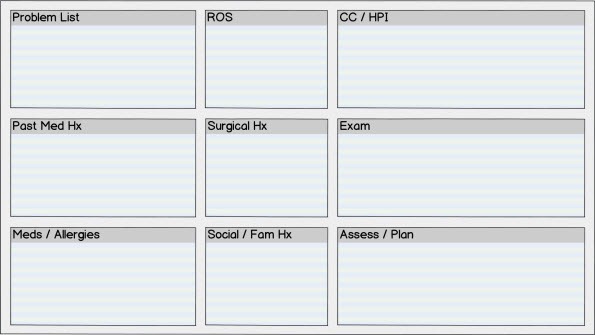
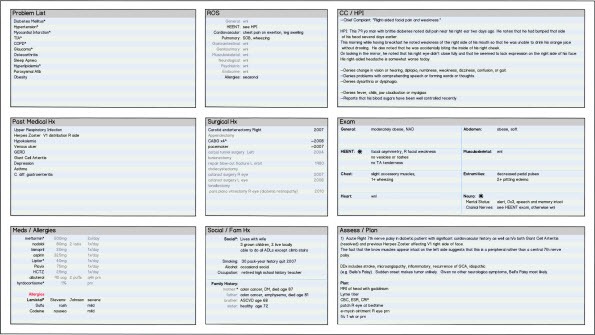
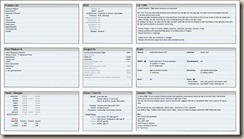
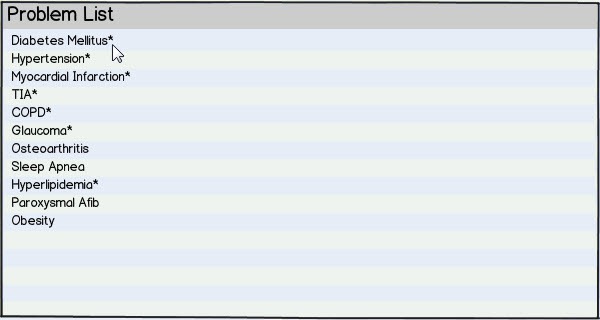
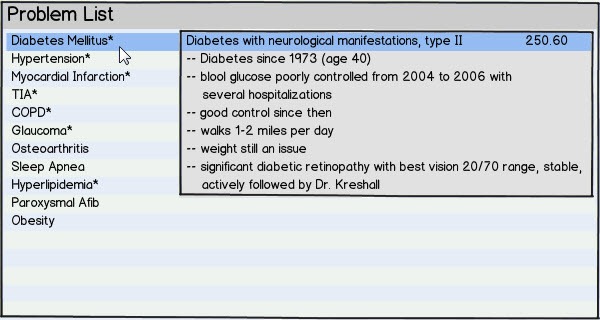
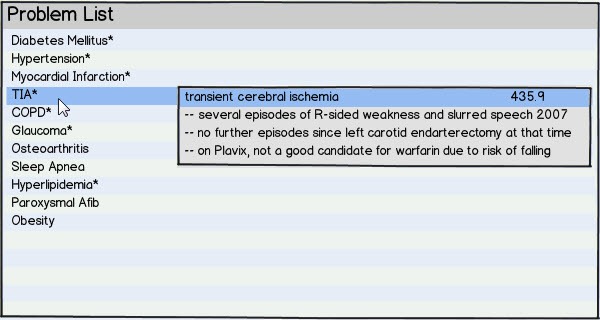
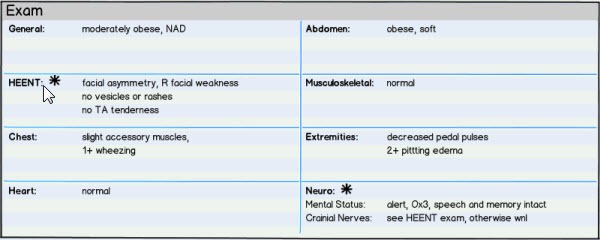
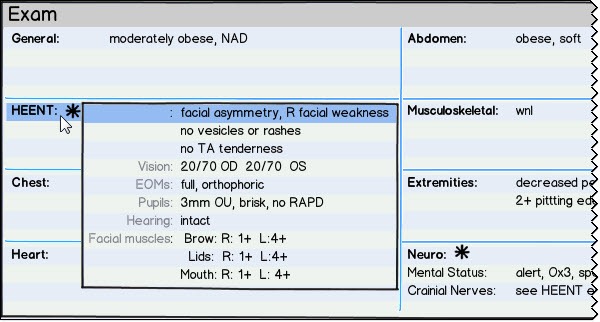
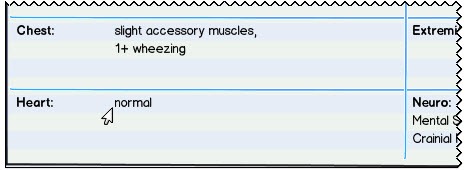
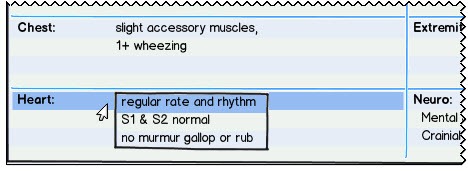
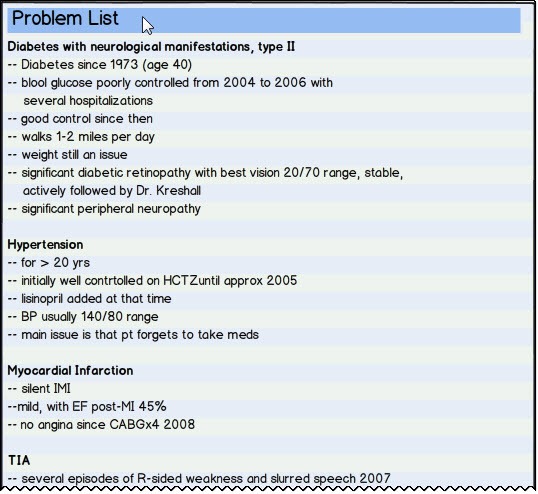
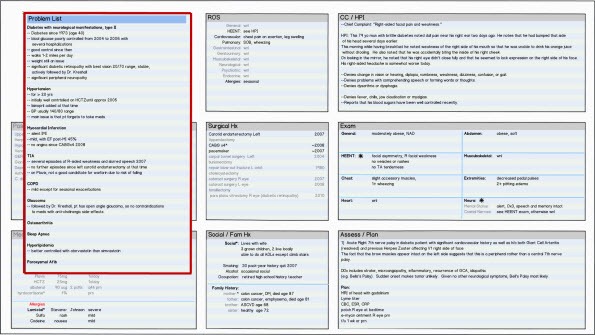

 back in the 2009 the company announced peer to peer sharing where providers could share records and I am guessing this was in the prior client/server version and of course since that time eClinicalWorks has their web based program so it makes sense to expand sharing even further.
back in the 2009 the company announced peer to peer sharing where providers could share records and I am guessing this was in the prior client/server version and of course since that time eClinicalWorks has their web based program so it makes sense to expand sharing even further. 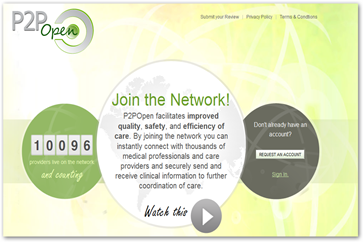 Here’s a video that explains a little bit more on how it works.
Here’s a video that explains a little bit more on how it works. 



 San Jose, California-based
San Jose, California-based 





